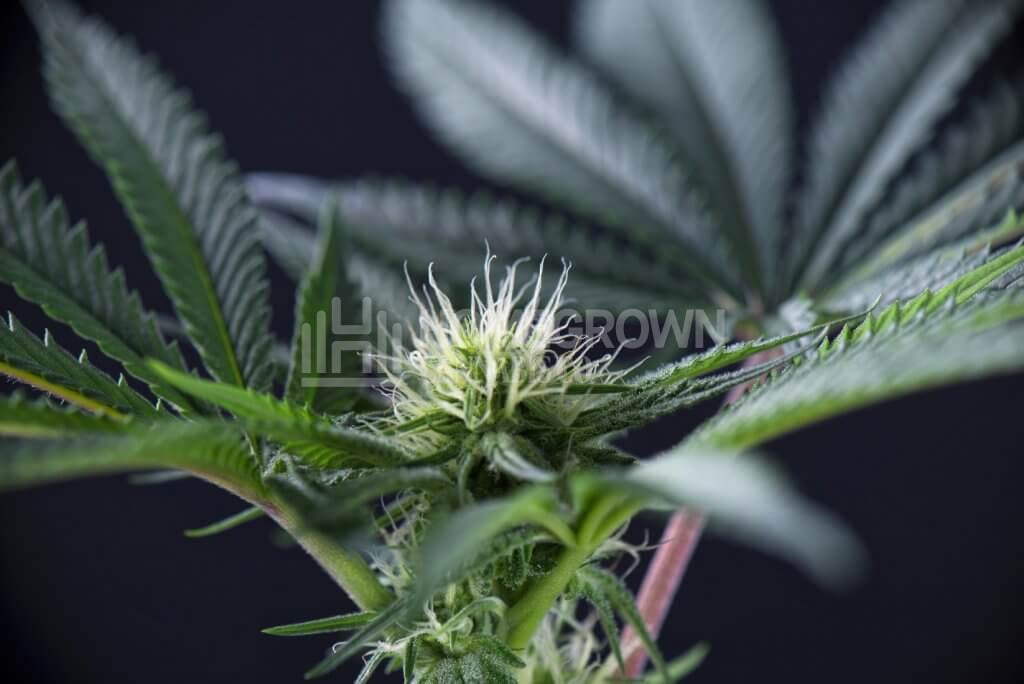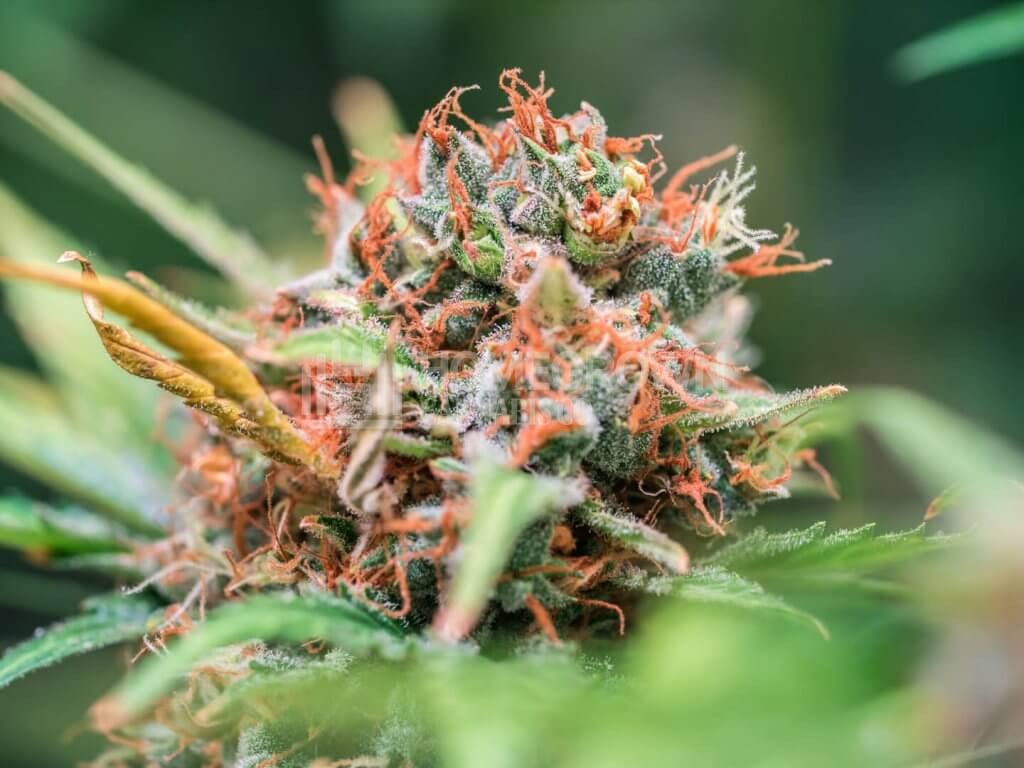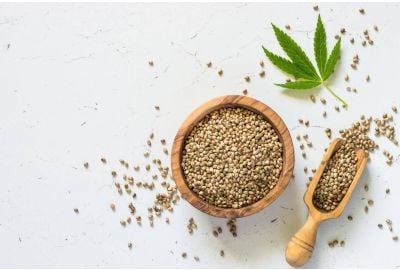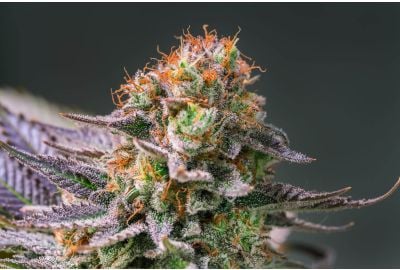Cannabis Flowering Stage: The Complete Guide
Familiarising yourself with flowering cannabis is useful whether you're a novice or an experienced grower. The life cycle of a marijuana plant is fascinating. The various stages include germination, cannabis seedling, the vegetative, and then the exciting cannabis flowering stage.
The vegetative stage is interesting as this is when your plant will grow like a weed. It's also where you'll hope to get all the problems out of the way as your crop recovers easily. During this time, she's mainly growing leaves and stems, sometimes several inches a day.

When does the cannabis flowering stage begin?
The marijuana flowering stage is when she develops those sticky resinous buds. This is where your hard work starts paying off.
With the exception of autoflowering seeds, the flowering stage begins once the plant hits a 12 hour light cycle. This means that it needs at least 12 consecutive hours of darkness per day.
Your flowers will naturally enter the marijuana flowering stage when grown outdoors. This usually happens when summer turns to fall and she receives less light daily.
Indoor growers need to trigger this phase by reducing the light from 16 to 12 hours daily.
The majority of strains flower in eight or nine weeks. Some sativas might take some extra time.
How to trigger the flowering stage?
People say you shouldn't rush beauty, but sometimes it's necessary. Now that you know when to start flowering cannabis, let’s look at the how.
Trigger flowering in outdoor plants
As mentioned above, your plants will naturally enter the flowering stage. If, however, you need to harvest sooner — simulating darkness is your best option.
Put a blackout sheet over your plants or greenhouse for 12 hours every day. This will give your plants the impression that summer is coming to an end.
Trigger flowering in indoor plants
Your plants won't naturally enter the marijuana flowering stage indoors.
They grow via artificial light instead of sunlight. To trigger flowering, you have to change the lighting schedule. Set it to at least 12 hours of darkness daily. Even though this is the norm, some strains might require more or less time in the dark—check with your breeder when buying your weed seeds.
As with most great things, there's a catch.
Any interruption in the blackout time could delay cannabis flowering — or worse, if you’re not using feminized seeds, turn your lovely ladies into hermaphrodites.

Stages of flowering cannabis timeline
Your flowering cannabis will go through three stages. These are further divided into weeks.
The marijuana flowering stages vary slightly depending on the strain. You'll notice that the period for Indica strains is usually 8–10 weeks—whereas Sativas flower for 10–12.
Early Flowering
There is no abrupt change that signals the first signs of the flowering stage. Instead, your plants will continue stretching loads before they start blooming.
Make sure that your plant babies have sufficient space and food. Think of it as a teenage boy hitting a growth spurt.
Weeks 1-3 - Transition
Also known as the flowering stretch—you'll notice a sudden increase in growth over these three weeks. Your plant needs to be big and strong enough to support the buds that’ll be growing over the next few weeks—it can double or even triple in size.
Your weed plants are still as resilient throughout the transition phase, making it easy to bounce back if something goes wrong.
The energy that would usually go into seed production is redirected to increasing the size and amount of buds; due to the absence of pollen from the flowering male cannabis plants.
You’ll start to notice loads of white cannabis pistils sprouting from your female plants. They usually accompany single leaf bunches at the top of what will later be the main colas.
If you spot pollen sacs on your plants, immediately remove them from your grow room as they are male plants.
Continue feeding your plants vegetative nutes during these few weeks. Your plants are still producing bud sites, so you can stunt growth if you introduce the incorrect minerals—meaning fewer and smaller bud sites.
If you still have space under the lights, you can gently bend the stems and spread them away from the center. This technique is known as low-stress training (LST). It helps to keep your canopy flat and ensures maximum light exposure.
Using LST at the start of the cannabis flowering stage, you can effectively increase your yield by as much as 40%.
Weeks 3-4 - Buds form
During this period, the growth spurt will start to slow down. Your weed plant should be about 50% bigger than a mere three weeks ago. All energy goes into forming the budlets instead.
By now, you can see actual buds forming, and the white pistils will look like they are shooting out of the budlets. You'll also start smelling that characteristic dank odor around this time.
During weeks three and four, your plant should still be lush and green. If you notice a color change in the leaves, it could be one of two things. Discoloration and rapid loss of blades could indicate a nutrient deficiency. It’s easily treated with some nutrients if caught early enough.
On the other hand—if the tips of the leaves turn yellow/ brown or they look burned, this indicates nute burn. To treat this, you need to rinse out the excess nutrients with pH-balanced water. When left untreated, your plants will no longer be able to produce their own nutrients.
Don't panic when the bottom blades turn yellow, or you lose a couple of leaves. This is normal due to the lack of sunshine for the bottom of the plant.

Mid-Flowering
When you reach this part of the cannabis flowering stage, training is no longer necessary. All your plant cares about now is the buds.
Weeks 4-6 - Buds swell
Next, in the marijuana flowering stages, you can expect the swelling of the budlets. They will fatten with each passing day. The buds will still have a bunch of white pistils shooting out in all directions.
Now that your plant is focusing more on fattening the buds, you can stop training. Instead, you have to start focusing on keeping the heavy buds upright.
If you notice your plants growing too close to the lights, super cropping is is a last-resort option. This means forcing your plants’ stems into a 90-degree angle. We don’t recommend it this late in the flowering stage as it stresses your plant out.
Experienced growers start looking into strategic defoliation for very leafy plants. It’s a great tactic as you expose the bud sites to the light, but keeping enough blades to carry your plant through till harvest is incredibly important.
Weeks 6-8 - Buds ripen
Your flowering cannabis has entered the next stage. The buds will start to ripen, and pistils will darken; how exciting.
At this point, you will no longer spot any vegetative growth. Your mature lady will devote all her energy to growing potent buds in her final stages of life.
It might sound strange, but now is the time to relax by caring for your marijuana plants.
She’s becoming much fussier regarding nutrients and much more sensitive to problems caused by them. Nitrogen, for example, isn’t being used as much by the plant, and if it accumulates in the leaves, it could lead to your plant self-pollinating, which is detrimental to the harvest.
You might notice a phenomenon called 'foxtailing' during this flowering stage of cannabis. It's when buds form on the bottom or sides of the existing ones. This is generally a sign of light or heat damage.
Other than foxtailing, over-exposure to heat and light could cause your buds to burn or bleach.
Late Flowering
You've made it to the last stage of flowering cannabis. Soon your hard work will pay off.
Week 8+ - Flush and harvest
There are a few signs to look out for when you're nearing harvest time. The strain you are growing will determine the specific week you can harvest, with a typical window of another 7 days.
With the odd exception, the pistils will usually turn orange nearing harvest time. Which means your plant is no longer creating new buds. At this stage of the cannabis flowering cycle, the trichomes will go from clear to amber as the THC levels increase.
Your plant is very sensitive during this cannabis flowering stage. Keep a close eye on your babies during these last few weeks to avoid bud rot and other ailments.
Your flowering buds will become heavy now, so be sure to provide ample support.
Now you're getting ready for the harvest; it's time to flush your cannabis plants. You'll replace nutrients with pH-balanced water. Depending on the length of your cannabis flowering cycle, you should flush for a week or two before your planned harvest.
Your growing medium will also play a role in how long you'll be flushing. Hydroponic growth mediums retain fewer cannabis nutrients than soil.
Think of flushing as your last chance to enhance the quality of your bud.

Can you train flowering weed?
Training is great as it maximizes your space indoors. It can also increase your yield in the long run.
If you plan on training during the flowering stage, the best is to do it in the first few weeks. When your plants first enter this period, the stems are still flexible. This makes it easier to bend them—perfect for low-stress training (LST).
LST is when you gently bend the stems, exposing more of the plant to light. Using this training method can increase your yield by up to 40%. Just be careful not to stress your plant, as this can lead to smaller harvests.
After the first month of the flowering stage, the stems stop stretching and become woody. Your plant will no longer be trainable and should be left to focus on growing some dank bud.
How to keep flowering cannabis healthy
Keeping your plants healthy is vital when flowering weed. It will help if you tend to problems as soon as they arise to risk losing a great harvest.
The first step is using the best nutrients for flowering cannabis. This means using different formulas for early flowering marijuana than you would when the buds are fattening.
Be careful not to overfeed your plants. Keep an eye out for signs of nute burn, and don't feed your flowering cannabis nutrients in the final weeks.

Cannabis Flowering Stage: Frequently Asked Questions
Do you have any additional questions about flowering cannabis? Or are you here on a quest for a very specific piece of information about this exciting time?
We’ll round off this in-depth overview by responding to the most common inquiries we hear from our community.
Happy budding stage!
Your first experience with flowering cannabis is unique and invaluable. The basics in this guide are here to leave you confident and solid. You’re now ready for the moment when your first-ever homegrown buds start showing their little heads.
Even if you’ve years of experience, a flowering cannabis plant is something that never stops surprising. We’ve laid the knowledge groundwork to help you achieve hefty harvests. The rest is between you and your plant.
Whichever level of experience you’re coming with, remember the following hallmarks of caring for your budding cannabis:
- It’s all about the light, whether Mother Earth controls it or you do. Use that to your advantage and manage this stage.
- Closely follow the three stages of cannabis flowering to know what to expect and whether anything’s gone wrong.
- Know your nutrients. They’re your best tool to optimize future yields.
- Harvest at the right time for optimal aroma and potency. Finish the ripening stage right to enhance the fruits of your labor.
Now that you’re familiar with this vital stage, why not put your knowledge to the test? Buy seeds from Homegrown and see what we described happen in real-time. Stay tuned to our blog for more guides on all things cannabis.
About the author: Derek LaRose
Also known as Kronic from The Cannabis Kronicles, Derek LaRose is a young ambitious cultivator and a staple educator for indoor cultivation.


